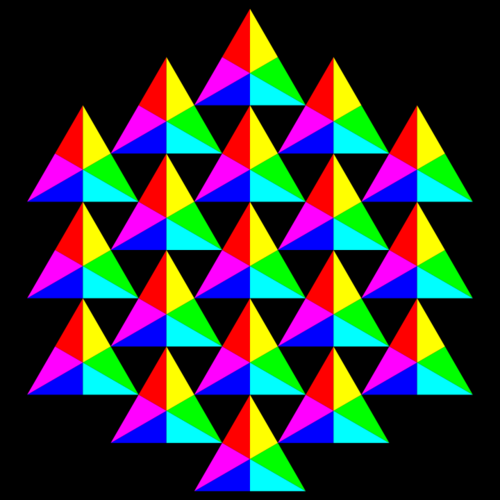Random Triangle
 Consider two points on a Cartesian coordinate system,
A
(
−
2
,
1
)
and
B
(
0
,
−
3
)
. Point
C
is then drawn such that
A
C
⊥
B
C
. The expected area of
Δ
ABC
can be expressed as
b
π
a
, where
a
and
b
are positive integers. Calculate
a
+
b
.
Consider two points on a Cartesian coordinate system,
A
(
−
2
,
1
)
and
B
(
0
,
−
3
)
. Point
C
is then drawn such that
A
C
⊥
B
C
. The expected area of
Δ
ABC
can be expressed as
b
π
a
, where
a
and
b
are positive integers. Calculate
a
+
b
.
The answer is 11.
This section requires Javascript.
You are seeing this because something didn't load right. We suggest you, (a) try
refreshing the page, (b) enabling javascript if it is disabled on your browser and,
finally, (c)
loading the
non-javascript version of this page
. We're sorry about the hassle.
2 solutions
Without loss of generality, we can consider A ( − 2 2 0 , 0 ) and B ( 2 2 0 , 0 ) . Being C ( x , y ) and A C ⊥ A B , we have that
( x − 2 2 0 , y ) ⋅ ( x + 2 2 0 , y ) = 0 ⟹ x 2 + y 2 = 5
that is, clearly, a circumference. It can be also written as
c ( θ ) = ( 2 2 0 cos θ , 2 2 0 sin θ ) , θ ∈ [ 0 , 2 π ] .
The PDF is simply f ( θ ) = 2 π 1 . The area A of the triangle is
A ( θ ) = 2 1 ⋅ 2 0 ⋅ 2 2 0 ∣ sin θ ∣ = 5 ∣ sin θ ∣
where
∣ sin θ ∣ = { sin θ , − sin θ , for 0 ≤ θ ≤ π for π < θ ≤ 2 π .
Expected value can be calculated
E [ A ( θ ) ] = ∫ 0 2 π A ( θ ) f ( θ ) d θ = ∫ 0 2 π 2 π 5 ∣ sin θ ∣ d θ = ∫ 0 π 2 π 5 sin θ d θ + ∫ π 2 π − 2 π 5 sin θ d θ = π 1 0
Eventually
a = 1 0 , b = 1 , a + b = 1 1
Clearly, the locus of C would be a circle. Consider the figure shown. The probability that ∠ A O C = θ = 2 π d θ .
As median divides a triangle in two equal parts in terms of area.
Required area = A = 2 a r ( △ A O C ) = 2 × 2 1 R × R ∣ sin θ ∣ = R 2 ∣ sin θ ∣
Hence, expected area = ∫ A d P = ∫ 0 2 π R 2 ∣ sin θ ∣ 2 π d θ
= π 2 R 2 = 2 π d 2
Here, d 2 = 2 2 + 4 2 = 2 0
Hence, expected area = 2 π 2 0 = π 1 0